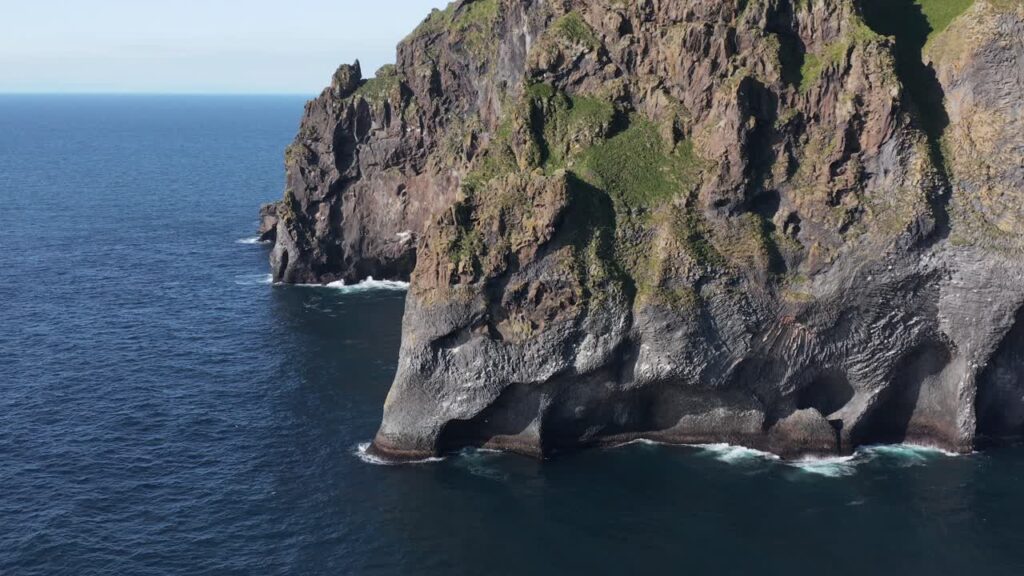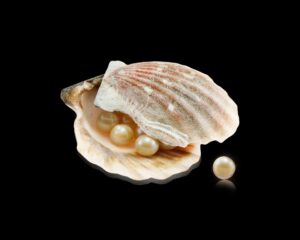Iceland, a land known for its dramatic landscapes that seem to leap straight out of a fairy tale, is home to countless natural wonders that capture the imagination of travelers from around the globe. Among these natural marvels, one unique formation stands out for its striking similarity to an elephant – the Elephant Rock. This magnificent rock formation, located on the island of Heimaey in the Vestmannaeyjar archipelago, has captured the hearts of visitors with its uncanny resemblance to an elephant dipping its trunk into the ocean.
 Pin
Pin Image by Freepik
Table of Contents
The Enigmatic Elephant Rock of Iceland
Were you ever made aware of the Elephant Rock, a stupendous natural creation sitting quietly in the Icelandic landscape? Its grey, textured surface, complete with shapes that mimic the lifelike appearance of an elephant, makes it seem as though Mother Nature herself took up sculpting. At first glance, the uncanny resemblance may make one wonder if it’s a colossal piece of artistry rather than a whimsical whim of the earth.
Nestled in Iceland, the Elephant Rock is a vision so astounding that it straddles the line between reality and fantasy. The local folklore adds an intriguing layer to its existence. Stories are told of an elephant that, many moons ago, wandered to the water’s edge. There, seeking respite, it lay down to rest but was overcome by a deep slumber. Under the relentless sun, the elephant supposedly turned to stone, becoming a permanent fixture in the landscape. This tale, while enchanting, is a figment of imagination, a testament to the human penchant for storytelling.
Another legend speculates that perhaps human hands painstakingly crafted the elephantine features as a monumental work of art. However idyllic this notion, it is far removed from the truth, akin to the fable of the petrified elephant. Yet, there’s a certain allure in imagining an anonymous artist, toiling away to carve such a magnificent figure from the rock.
The truth behind Elephant Rock, however, is grounded in natural geological processes. Its remarkable likeness to an elephant is purely a masterpiece of nature’s making. Despite the folk tales and myths surrounding its origin, the formation is not the result of human endeavor. The area surrounding this natural wonder thrives, drawing tourists from all over to marvel at this spectacle.
Unlike other natural formations that might evoke thoughts of extraterrestrial sculptures, Elephant Rock stands out for its likeness to something crafted by human hands. Yet, this is the beauty of nature – its ability to create forms that ignite our imagination, leaving us to ponder the line between the crafted and the natural. Elephant Rock, with its majestic appearance, remains a marvel, a tribute to the power and artistry of the natural world.
Exploring the Origins and Allure of Elephant Rock
Elephant Rock stands as a testament to the dramatic and powerful forces of nature. This remarkable rock formation, resembling the shape of an elephant, has captivated visitors for its unique natural beauty. Contrary to some beliefs, Elephant Rock was not formed during the famous 1973 eruption of Eldfell Volcano. Instead, its origins are deeply rooted in the ancient volcanic activity that characterizes the landscape of Heimaey island in the Vestmannaeyjar archipelago.
The creation of Elephant Rock is a result of volcanic eruptions that predate modern history. These eruptions caused lava to flow and rapidly cool, leading to the formation of this iconic pachyderm-shaped silhouette. Heimaey, the largest island of the Vestmannaeyjar chain, is often referred to as “home island” and boasts a rich history intertwined with volcanic activity, including the significant event of 1973 that reshaped the island but did not birth Elephant Rock.
For those enthralled by the majesty of natural formations and the stories behind them, a trip to Elephant Rock is a quintessential Icelandic adventure. Accessible from the capital, Reykjavik, adventurers can embark on a scenic drive along the South Coast to the ferry port at Landeyjahöfn. From there, a ferry ride transports visitors to the gateway of this geological marvel.
An optimal way to experience Elephant Rock is by taking the Westman Islands tour. This expedition not only facilitates access via a ferry journey from Landeyjahöfn or Þorlákshöfn but also offers an unparalleled opportunity to witness the rock up close. The one-hour boat journey around the area provides ample time for taking in the sights and snapping those picture-perfect shots against the backdrop of Elephant Rock.
For anyone drawn to exploring unique natural wonders, Elephant Rock in Iceland stands out as an unforgettable destination. Its fascinating origin story, coupled with the awe-inspiring sight, makes for an essential addition to any travel itinerary in Iceland.
How to Visit Elephant Rock?
Visiting Elephant Rock requires a bit of planning but is undoubtedly worth the effort. The most practical way to reach Heimaey, the island where Elephant Rock resides, is by ferry from the mainland town of Landeyjahöfn. Once on Heimaey, visitors can either hike to a viewpoint overlooking the rock or explore it by taking a boat tour around the island, offering a unique perspective of this magnificent formation from the sea.
Best Time to Visit and What to Expect
The best time to visit Elephant Rock and Heimaey, in general, is during the summer months, from June to August, when the weather is more favorable, and days are longer. This period allows for optimal viewing of the rock formation and lets visitors fully explore the island’s other attractions, including puffin watching and exploring Eldfell volcano.
Video: Iceland's Elephant Rock
Conclusion
Visiting Iceland’s Elephant Rock offers an unforgettable experience that epitomizes the island’s magical blends of natural wonders. Whether viewed from the land or sea, the elephant-like silhouette against the backdrop of the North Atlantic is a breathtaking sight that highlights the creativity of nature. Don’t miss the chance to see this incredible natural sculpture up close on your next trip to Iceland.
FAQs: Visiting Iceland's Elephant Rock
Elephant Rock is a stunning natural rock formation located in Iceland that remarkably resembles an elephant. This natural sculpture is a result of years of volcanic activity and erosion, making it a unique and unforgettable sight.
Elephant Rock is situated on the island of Heimaey, part of the Vestmannaeyjar (Westman Islands) archipelago off the south coast of Iceland.
To reach Elephant Rock, you first need to get to the Westman Islands. This can be done by ferry from Landeyjahöfn harbor or by a short flight from Reykjavik. Once on Heimaey, you can either hike, drive, or take a guided tour to reach the site.
Generally, there is no entrance fee to see Elephant Rock as it is a natural outdoor formation. However, if you opt for a guided tour, there may be a fee for the tour service.
The best time to visit Elephant Rock is during the summer months, from June to August, when the weather is milder, and the days are longer. However, visiting in the shoulder seasons (May and September) can also offer a less crowded experience.
Facilities near Elephant Rock are minimal as it’s a natural attraction. However, in the town of Vestmannaeyjar on Heimaey Island, you can find accommodations, restaurants, and other amenities.
Yes, visitors are encouraged to take photos of Elephant Rock. It’s a popular spot for photography due to its unique shape and scenic backdrop. However, always be mindful of your surroundings, especially when you’re close to the ocean or on uneven terrain.
Given Iceland’s unpredictable weather, it’s advisable to dress in layers and wear sturdy footwear, especially if you plan to hike around the area. Waterproof and windproof clothing are also recommended.
The area around Elephant Rock is generally accessible, but the terrain may be challenging for those with mobility issues. The nature of the landscape means paths can be uneven and rough.






























